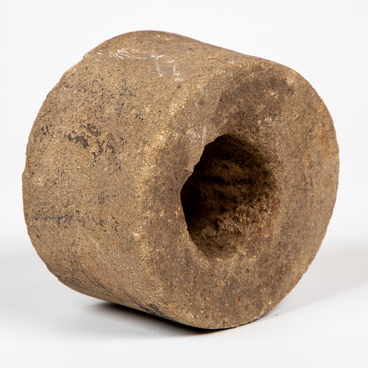The collection of the Sheltozero Veps Ethnographic Museum named after Rurik Petrovich Lonin features a milk bucket, donated to the museum in 1973 by Vyacheslav Yefimovich Zakharin. The house of Vyacheslav Zakharin, a resident of the ancient village of Kaskesruchey, is characterized by traditional Karelian decoration. All household items, including those which were given to the museum, were once made by the hands of Veps craftsmen.
The milk bucket is made of separate wooden, more often aspen, planks, fastened with juniper hoops, modeled after a common wooden bucket. However, the milk bucket differs from other buckets by its spout, which is convenient for draining and straining milk. The spout is made of a single piece of wood: the plank is cut out of the trunk, and the spout is made out of a hollowed out knot. Despite all the practicality, the spout was at the same time the weakest spot in the design of the tray, because the cow was milked and the milk was filtered twice a day. Veps men were known to be good craftsmen, so replacing the spout in the milk bucket was not difficult. Moreover, the necessary blank for repairing the bucket could be done without interrupting the process of picking berries and mushrooms in the forest.
As a rule, a middle-class Veps family in the 19th — early 20th century kept one horse, one or two cows, two or three sheep, several chickens, and pigs in some farms. Rich farms at the beginning of the 20th century had up to eight cows, up to twenty sheep, and three or more horses. In the 20th century, goats appeared in some Veps farms. However, cows were the main providers: it was impossible to feed a large family without them. In addition, the Veps respected and feared shepherds, believing that they had magical power over the herd, obtained from the leshy (deity of the forests in pagan Slavic mythology). Old-timers tell wonderful stories about how shepherds calmed violent cattle and helped lost people and animals get out of the forest.
The museum has an extensive collection of milk
buckets, which, without a doubt, indicates the spread of this type of bucket
with a spout in the towns and villages of the Veps Prionezhye.


